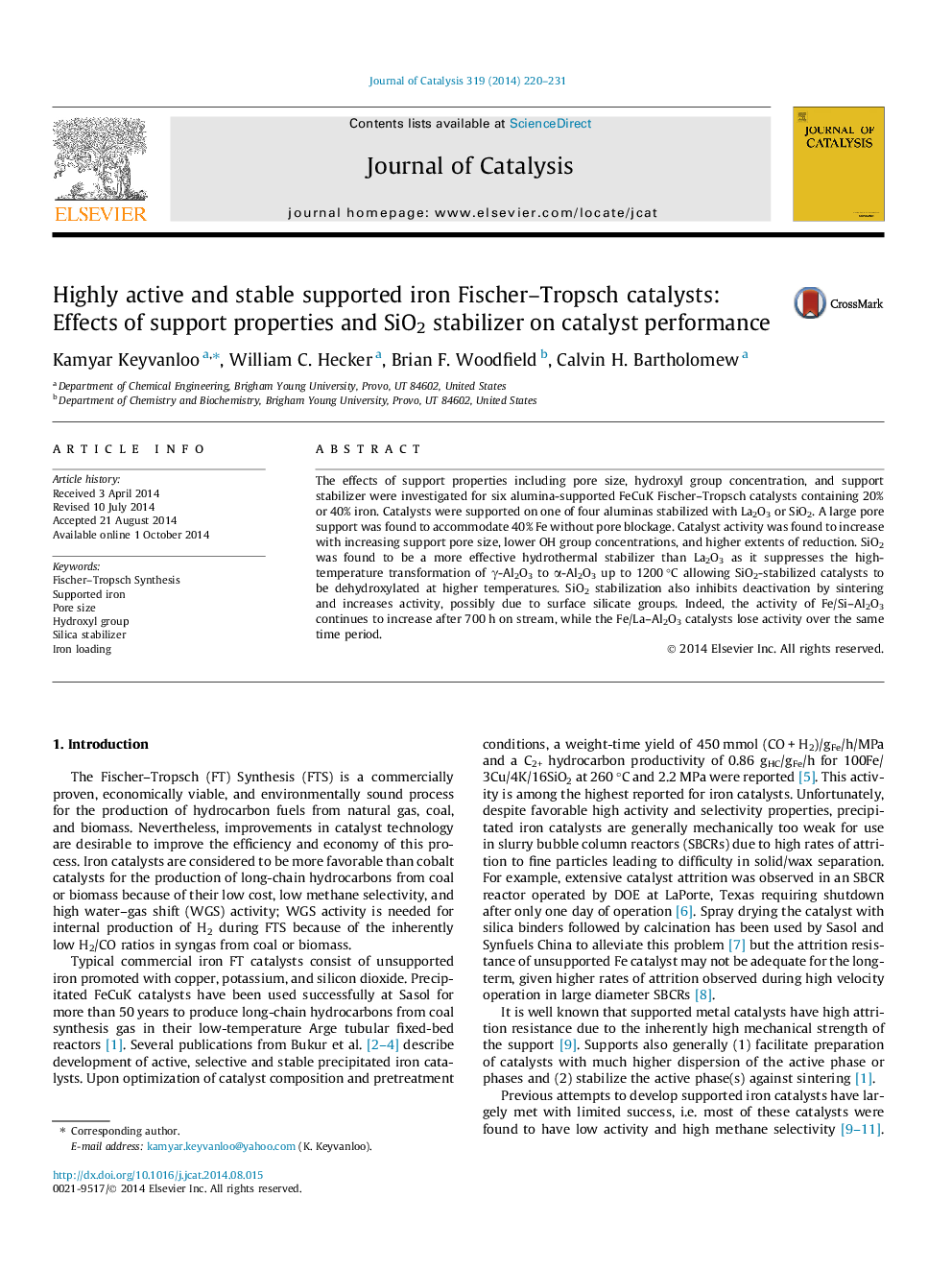| Article ID | Journal | Published Year | Pages | File Type |
|---|---|---|---|---|
| 61011 | Journal of Catalysis | 2014 | 12 Pages |
•Effects of support properties on catalyst activity and stability were investigated.•A support with large pore volume accommodates higher Fe loading without pore blocking.•Fewer OH groups lead to higher extent of reduction and higher activity.•SiO2 stabilization inhibits deactivation by sintering and increases activity.•SiO2 was found to be a more effective hydrothermal stabilizer than La2O3.
The effects of support properties including pore size, hydroxyl group concentration, and support stabilizer were investigated for six alumina-supported FeCuK Fischer–Tropsch catalysts containing 20% or 40% iron. Catalysts were supported on one of four aluminas stabilized with La2O3 or SiO2. A large pore support was found to accommodate 40% Fe without pore blockage. Catalyst activity was found to increase with increasing support pore size, lower OH group concentrations, and higher extents of reduction. SiO2 was found to be a more effective hydrothermal stabilizer than La2O3 as it suppresses the high-temperature transformation of γ-Al2O3 to α-Al2O3 up to 1200 °C allowing SiO2-stabilized catalysts to be dehydroxylated at higher temperatures. SiO2 stabilization also inhibits deactivation by sintering and increases activity, possibly due to surface silicate groups. Indeed, the activity of Fe/Si–Al2O3 continues to increase after 700 h on stream, while the Fe/La–Al2O3 catalysts lose activity over the same time period.
Graphical abstractFigure optionsDownload full-size imageDownload high-quality image (54 K)Download as PowerPoint slide
